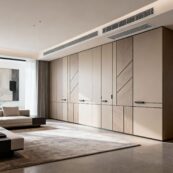
In today’s retail world, customers are not just looking to buy products — they’re searching for experiences. The most successful stores are the ones that make shoppers feel something from the moment they step in. A large part of that magic lies in the design and ambiance, powered by the perfect combination of retail furniture and display showcases.
These elements, when used strategically, don’t just enhance the look of a store — they create an immersive journey that keeps customers engaged and emotionally connected to the brand.
The Shift from Selling Products to Selling Experiences
Retail has evolved beyond simple transactions. The focus has shifted toward “experiential shopping,” where the environment influences how customers perceive value. Modern consumers want to touch, feel, and visualize how a product fits into their lives.
That’s why brands now invest heavily in in-store design. From layout and lighting to furniture and display showcases, every detail plays a role in shaping emotions. When these elements come together cohesively, they transform a store into a memorable experience rather than a place of purchase.
Retail Furniture as a Design Storytelling Tool
Retail furniture is more than just a functional component — it’s the foundation of storytelling within a store. Every chair, table, and counter can communicate the brand’s identity and values.
For example:
- Luxury brands often use velvet seating, marble counters, and metallic finishes to convey exclusivity.
- Eco-conscious retailers opt for bamboo shelving, reclaimed wood, and earthy tones to promote sustainability.
- Tech-focused stores prefer sleek lines, minimalist designs, and futuristic finishes to represent innovation.
Furniture placement and design dictate how customers move through a store. Comfortable seating encourages them to stay longer, while modular displays allow flexibility for seasonal layouts or promotions. Smartly chosen furniture enhances both comfort and curiosity — key ingredients for immersive shopping.
The Importance of Display Showcases in Customer Engagement
If furniture sets the tone, display showcases set the stage. They are the focal points that guide customers’ eyes toward featured products and highlight their value.
Well-designed showcases blend visibility with protection. Glass cases with integrated lighting, for instance, not only secure products but also make them look more appealing. A thoughtfully illuminated watch or perfume behind clear glass instantly becomes more desirable.
Key elements that make display showcases effective include:
- Lighting: Directional lighting creates drama and draws attention to products.
- Positioning: Placing showcases strategically near entrances or checkout counters boosts exposure.
- Transparency: Using high-quality glass enhances clarity and creates a luxurious feel.
- Flexibility: Modular showcases allow brands to redesign layouts quickly without reconstruction costs.
By combining visual appeal with accessibility, showcases invite customers to interact — turning curiosity into purchase intent.
Combining Furniture and Display Showcases for an Immersive Effect
The true power of retail design lies in the seamless integration of furniture and showcases. Together, they can guide movement, evoke emotion, and support storytelling.
Here’s how retailers achieve harmony:
- Coordinated Materials: Using similar finishes and tones ensures consistency.
- Strategic Layouts: Furniture directs the flow, while showcases highlight the journey’s focal points.
- Mood Lighting: Warm lighting near furniture areas and accent lighting on showcases create balance.
- Thematic Continuity: Every design choice should align with the brand’s narrative — whether minimalist, artistic, or luxurious.
The best stores treat furniture and showcases as part of a single ecosystem that shapes how customers experience products and emotions simultaneously.
How Design Affects Buying Behavior
Store design has a powerful psychological effect on shoppers. Certain layouts encourage exploration, while others create a sense of urgency. Retailers can use furniture and showcases to influence customer behavior subtly.
For example:
- Circular layouts encourage continuous browsing and keep customers moving.
- Zoned layouts use furniture to separate collections by category, making navigation easier.
- Strategic placement of showcases near the entrance or checkout area increases impulse purchases.
When customers feel comfortable, inspired, and emotionally engaged, they’re more likely to make a purchase — and return.
Case Studies in Experiential Retail
Let’s look at how top global retailers use these design principles to create memorable experiences:
- Apple Stores: Sleek tables, open layouts, and clear glass showcases emphasize simplicity and innovation. The design reflects Apple’s brand philosophy perfectly.
- Sephora: Mirrors, illuminated showcases, and interactive counters allow customers to test products in a luxurious, hands-on environment.
- IKEA: Their retail furniture isn’t just for display — it’s an invitation. Customers can sit, touch, and visualize how each piece fits into their home.
Each of these brands uses design as a language — one that speaks directly to customers’ emotions.
The Rise of Interactive Retail Spaces
In 2025 and beyond, retail design is moving toward interactivity. Brands are incorporating technology into furniture and showcases to elevate experiences.
- Smart showcases now come with motion sensors that light up when customers approach.
- Digital furniture integrates charging points and screens displaying product videos.
- Augmented Reality (AR) mirrors let shoppers visualize how an item will look on them or in their homes.
These innovations turn passive browsing into active engagement, merging online convenience with offline experience.
Sustainability and Ethical Design Choices
Modern shoppers care about the environment, and retailers must respond. Sustainable retail furniture and display showcases not only reduce environmental impact but also attract eco-conscious customers.
Trends in sustainable design include:
- Using recyclable materials like aluminum, bamboo, and tempered glass.
- Adopting LED lighting for energy efficiency.
- Designing modular furniture to reduce waste during renovations.

An eco-friendly design isn’t just good for the planet — it enhances brand image and creates a positive emotional connection with customers who value responsibility.
Tips for Retailers to Create Immersive Store Designs
If you’re designing or remodeling a retail space, here are some practical tips:
- Start with a Story: Every store should express what your brand stands for.
- Use Lighting Strategically: Highlight products, but also create ambiance.
- Balance Functionality and Aesthetics: Make sure furniture looks good but also serves a purpose.
- Encourage Exploration: Design layouts that invite movement and discovery.
- Invest in Comfort: The longer customers stay, the more they buy.
These steps help transform ordinary retail spaces into emotionally engaging environments.
Conclusion
Creating an immersive retail experience requires a thoughtful balance of design, comfort, and storytelling. The fusion of retail furniture and display showcases allows brands to go beyond selling — they can inspire, engage, and connect with customers on a deeper level.
When customers walk into a space that feels inviting, consistent, and emotionally resonant, they don’t just shop — they experience the brand. And in modern retail, experience is everything.












